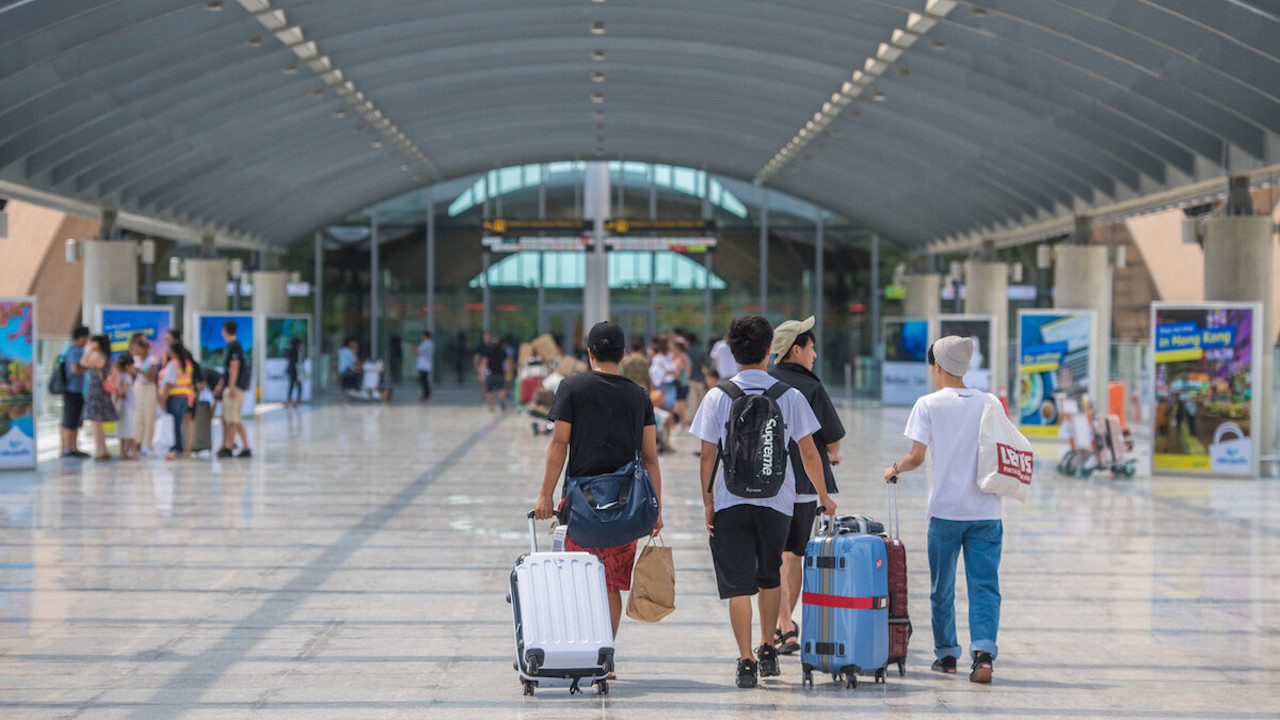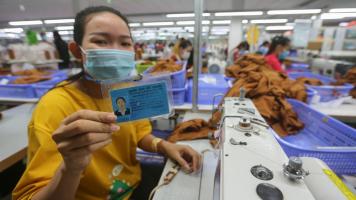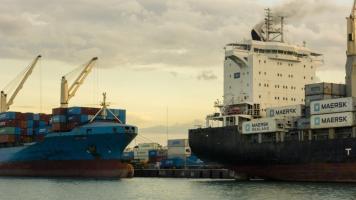
Offering nonstop services between secondary destinations, such as Cebu−Kota Kinabalu and Makassar−Kota Kinabalu, could boost intra-Southeast Asian passenger traffic and tourism. Photo credit: ADB.
An ADB study offers strategies for turning challenges into opportunities.
After suffering heavy losses during the pandemic, air travel in Southeast Asia is experiencing a rebound this year. A study by the Asian Development Bank (ADB) sees airlines from the region recovering 90% of their capacity by the end of 2023.
However, the path to full recovery will be challenging. Fleet and staff constraints, changing travel patterns and expectations, and growing environmental concerns demand new strategies and business models and increasing regional and multisectoral collaboration.
Recommendations of the study include improving intraregional connectivity, particularly at secondary destinations; beefing up freight capacity; embracing digitalization and new technologies; and advancing decarbonization in aviation.
Post-pandemic outlook
Before the pandemic, the market for air travel in Southeast Asia grew much faster than the global average. Passenger traffic hit 510 million in 2019, making up 11% of global traffic.
“It may not be until 2025 that a full recovery to 2019 traffic levels is achieved,” says the report. It notes that Southeast Asia’s aviation industry bore larger reductions in international passenger traffic because borders were closed longer than other regions. Inbound traffic from the People’s Republic of China, which was driving much of pre-pandemic growth, continues to be low. Domestic travel has performed better but was also slower to recover than in other regions because of low COVID-19 vaccination rates when the Delta variant emerged.
Domestic traffic could regain 2019 levels by the end of the year with scheduled seat capacity at nearly 90% in the first quarter. About 67% of international capacity was recovered in the same period and was expected to reach 76% in the second quarter and forecast to hit 90% by December.
However, the study warns the aviation sector to brace for “a possible permanent reduction in future growth” and for “a potentially long period of high volatility with possible rapid increases or decreases in demand.” It cites reduced business travel because of greater workplace flexibility, more online meetings, and increased corporate commitment to emission reduction.
The Net-Zero Movement is also expected to clip growth as calls for sustainability in the aviation sector grow louder. If Southeast Asia follows other regions in taxing aviation emissions, this will likely increase prices and reduce passenger traffic.
The study says more leisure travelers are staying longer in one destination rather than visiting multiple destinations. A shift in travel preferences from connecting to direct flights will affect both airlines and hub airports.
Another major problem is the skills shortage in global aviation, including pilots, maintenance crew, and air traffic controllers. This was a problem that was made worse by the pandemic. The grounding of flights due to COVID-19 resulted in millions of jobs lost across airlines and airports. The aviation sector is now hard-pressed to fill vacancies as passengers return to the skies.
Opportunities
Despite the challenges, the study sees several prospects for growth and expansion.
Flights between secondary cities. “Southeast Asian countries should work on improving intra-Southeast Asia connectivity, particularly at secondary destinations, and consider initiatives to help facilitate growth in intra-Southeast Asia passenger traffic and visitors,” the report says.
There is growth potential in introducing flight services between secondary cities that are underserved or not served at all. “In many cases, a direct flight would be short, but as they do not exist, passengers have circuitous journeys that are time consuming and expensive,” it says. Offering nonstop services on these routes could boost intra-Southeast Asian passenger traffic and tourism. Potential routes include Cebu−Kota Kinabalu, Makassar−Kota Kinabalu, Chiang Mai−Nha Trang, Da Nang−Penang, Hat Yai−Medan, and Johor Bahru−Bandung. The study also points out that increasing international services to secondary destinations will boost traffic in Southeast Asian hubs since they serve as feeder airports to hubs.
In the BIMP-EAGA subregion, the report says there is an opportunity to improve connectivity in the post-pandemic era to boost economic growth and regional tourism. “The first of several potential new routes in this subregion could be a service between Kota Kinabalu and Zamboanga in the Philippines, which was initially planned to launch in March 2020. This route was postponed due to the pandemic but is being considered again. There were also several promising new intra-Borneo routes connecting Brunei Darussalam with east Malaysia and Indonesia (Balikpapan, Bintulu, Sandakan, Sibu, and Tawau) that were launched in 2019 and have been suspended since the start of the pandemic but could be resumed.
Expansion of air freight services. During the height of the pandemic, airlines in the region used passenger aircraft as freighters, which provided more income due to high demand amid supply chain constraints. Before the pandemic, Southeast Asian airlines treated their air cargo business as “a side product” on passenger flights.
The rapid rise of e-commerce will continue to increase the demand for air cargo services both in the domestic and regional markets.
“Southeast Asian airlines should increase their focus on air cargo and invest in freighters to facilitate rapid air cargo growth in the region and improve their share of Southeast Asia’s booming air cargo market,” says the study. “Southeast Asian airports should increase their focus on air cargo and invest in air cargo-related infrastructure to facilitate rapid air cargo growth in the region and close the gap with rival hub airports in other regions.”
Digitalization and new technologies. More consumers are turning to digital platforms to plan their travel and book their flights. The prevalence of remote work and lack of workers are also making it necessary for employers even in the aviation sector to adopt digital technologies in their operation. Aside from digitalization, the study also suggests looking into the potential of using drones and electric vertical takeoff and landing aircraft in transporting cargo and passengers.
Low-carbon fuel. The study says the region should advance the decarbonization of the aviation sector by supporting the development of sustainable aviation fuel (SAF) technologies. “Southeast Asian countries should consider price floor support for the early stages of SAF production and a regional mandate requiring a minimum amount of SAF with a gradual increase to ensure long-term sustainability targets are met.”
Indonesia and Malaysia, both major palm oil producers, have announced that they are developing sustainable aviation fuel using palm oil or palm waste.
This article was first published by BIMP-EAGA on 22 September 2023.

BIMP-EAGA
The Brunei Darussalam–Indonesia–Malaysia–Philippines East ASEAN Growth Area, or BIMP-EAGA, is a cooperation initiative established in 1994 to spur development in remote and less developed areas in the four participating Southeast Asian countries.

